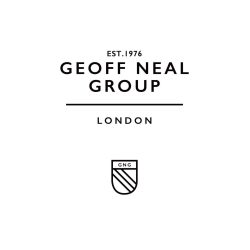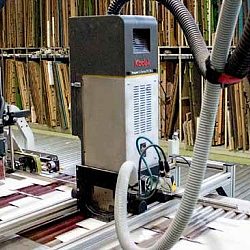Customer Stories
Nice Matin 3 min read
Prepress innovations ensure that quality print keeps making headlines
Flagship Press 3 min read
An integrated Kodak technology solution boosts efficiency and business sustainability for Flagship Press
Chicoine Group 2 min read
Optimizing prepress workflow helps Chicoine Group strengthen their customer relationships
Stämpfli Kommunikation 2 min read
Kodak's groundbreaking process free plates open up new print possibilities
Druckzentrum Neckar-Alb 3 min read
Process-free platemaking enables leading German newspaper printer to streamline their print and unlock more profit
The Villages Daily Sun 3 min read
Fast, automated, process-free Kodak platemaking powers The Villages Daily Sun's nonstop operations
Westamerica Communications 2 min read
With process-free technology, Westamerica wins big on sustainability and cost efficiency
PAWI Group 3 min read
The industry's most advanced process-free plates help PAWI advance their business
Knight Abbey Printing and Direct Mail 2 min read
Kodak software and services bring bottom-line benefits to Knight Abbey's thriving business
Millennium Print Group 2 min read
Kodak tools deliver the precision and quality Millennium needs for high-end trading card production
Zumbiel Packaging 2 min read
Zumbiel uses Kodak inkjet technology to help an iconic American pet brand create new marketing buzz
DZZ Druckzentrum Zurich 3 min read
Switzerland's top newspaper printer maintains high productivity and profits with Kodak violet plates
Onlineprinters Group 3 min read
Automated, process-free platemaking from Kodak optimizes large-scale production
Modern Litho 3 min read
At the forefront of print technology, a strong Kodak partnership helps keep Modern Litho modern
Bluetree Group 3 min read
Process-free platemaking takes Bluetree's high-speed, eco-conscious production to the next level
Platypus Packaging Print 3 min read
Migrating its print workflow to the cloud with Kodak's secure workflow solutions gave Platypus flexibility, scalability, and peace of mind
Benedict Press 3 min read
Modernizing Benedict Press and prioritizing sustainability with automated, process-free platemaking
Geoff Neal Group 3 min read
Premium printer Geoff Neal maximizes productivity with "best-in-class" automation and Kodak partnership
offset5020 Druckerei und Verlag GesmbH 2 min read
As a short-run specialist with a focus on sustainability, offset5020 has reaped the rewards of process-free platemaking
Graphic Packaging International 3 min read
With Kodak imprinting technology, Graphic Packaging evolves to offer high-demand customization
WestRock 3 min read






























